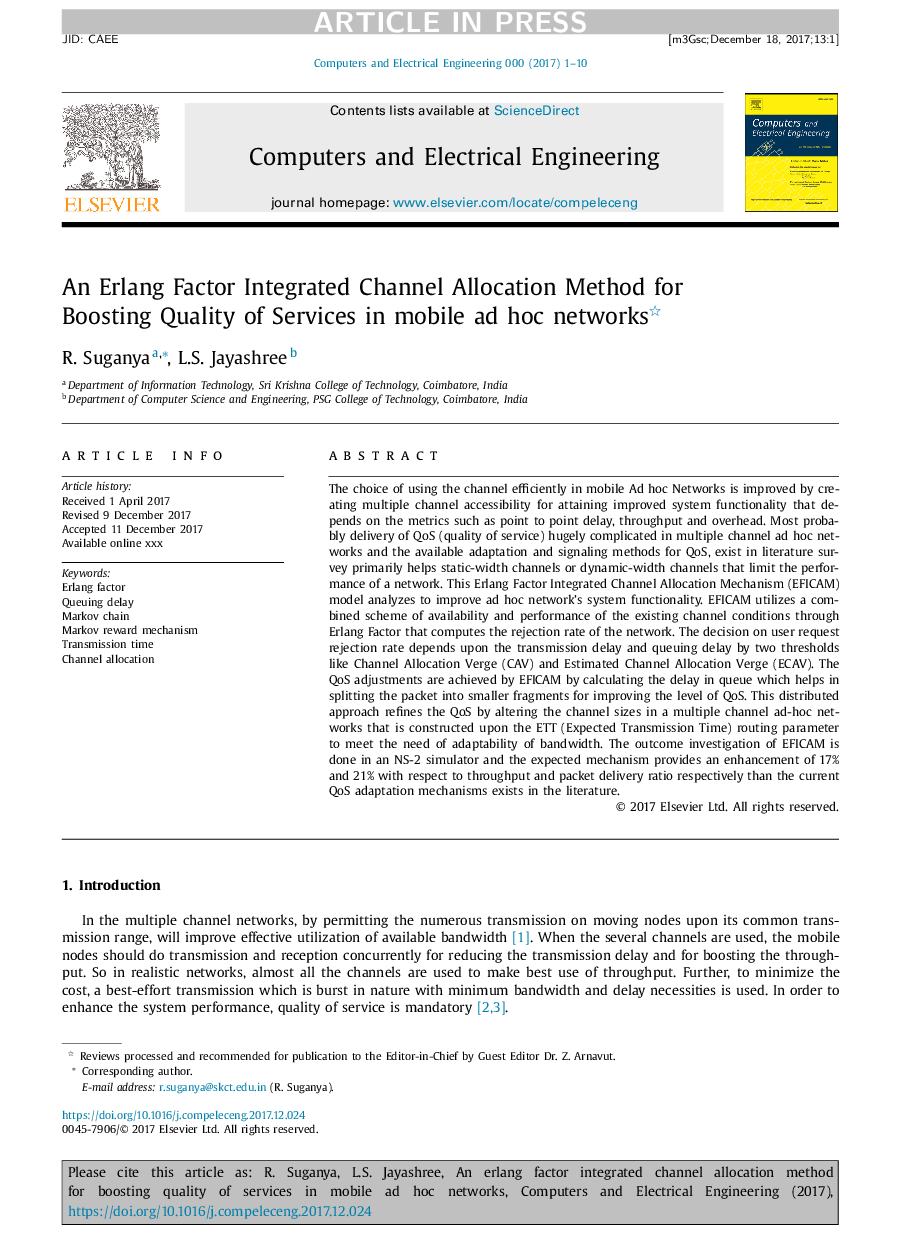| کد مقاله | کد نشریه | سال انتشار | مقاله انگلیسی | نسخه تمام متن |
|---|---|---|---|---|
| 6883475 | 1444174 | 2018 | 10 صفحه PDF | دانلود رایگان |
عنوان انگلیسی مقاله ISI
An Erlang Factor Integrated Channel Allocation Method for Boosting Quality of Services in mobile ad hoc networks
دانلود مقاله + سفارش ترجمه
دانلود مقاله ISI انگلیسی
رایگان برای ایرانیان
کلمات کلیدی
موضوعات مرتبط
مهندسی و علوم پایه
مهندسی کامپیوتر
شبکه های کامپیوتری و ارتباطات
پیش نمایش صفحه اول مقاله

چکیده انگلیسی
The choice of using the channel efficiently in mobile Ad hoc Networks is improved by creating multiple channel accessibility for attaining improved system functionality that depends on the metrics such as point to point delay, throughput and overhead. Most probably delivery of QoS (quality of service) hugely complicated in multiple channel ad hoc networks and the available adaptation and signaling methods for QoS, exist in literature survey primarily helps static-width channels or dynamic-width channels that limit the performance of a network. This Erlang Factor Integrated Channel Allocation Mechanism (EFICAM) model analyzes to improve ad hoc network's system functionality. EFICAM utilizes a combined scheme of availability and performance of the existing channel conditions through Erlang Factor that computes the rejection rate of the network. The decision on user request rejection rate depends upon the transmission delay and queuing delay by two thresholds like Channel Allocation Verge (CAV) and Estimated Channel Allocation Verge (ECAV). The QoS adjustments are achieved by EFICAM by calculating the delay in queue which helps in splitting the packet into smaller fragments for improving the level of QoS. This distributed approach refines the QoS by altering the channel sizes in a multiple channel ad-hoc networks that is constructed upon the ETT (Expected Transmission Time) routing parameter to meet the need of adaptability of bandwidth. The outcome investigation of EFICAM is done in an NS-2 simulator and the expected mechanism provides an enhancement of 17% and 21% with respect to throughput and packet delivery ratio respectively than the current QoS adaptation mechanisms exists in the literature.
ناشر
Database: Elsevier - ScienceDirect (ساینس دایرکت)
Journal: Computers & Electrical Engineering - Volume 66, February 2018, Pages 139-148
Journal: Computers & Electrical Engineering - Volume 66, February 2018, Pages 139-148
نویسندگان
R. Suganya, L.S. Jayashree,